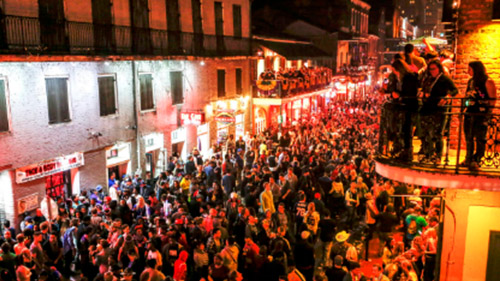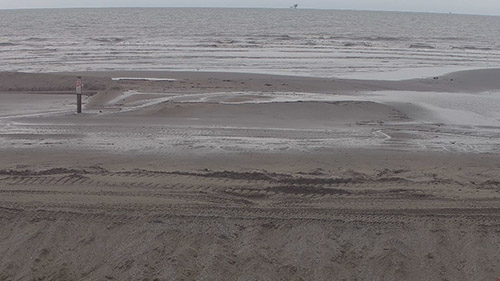New Orleans Webcam: Big Easy Live Cameras
New Orleans is a city full of culture, history, and excitement. With New Orleans Webcam, you can enjoy live views of this vibrant city from any computer or smartphone. These live feeds bring the best of New Orleans right to your screen, allowing you to explore famous spots like the French Quarter and Grand Isle Beach in real time.
Live Views of the French Quarter
The French Quarter is the heart of New Orleans. Its narrow streets, colorful buildings, and lively atmosphere draw visitors from all over the world. Now, you can see it all through live webcams. Watch people strolling along Bourbon Street, enjoy the charming architecture, and take in the bustling energy of one of the city’s most iconic areas. From morning to night, the French Quarter is always full of life, and the live cams let you be a part of it.
Enjoy the Nightlife from Afar
At night, the French Quarter truly comes alive. The New Orleans Webcam let you watch the crowds gather for a night of music, food, and entertainment. See people enjoying famous spots like Preservation Hall for live jazz or heading to bars and clubs along Bourbon Street. You’ll witness the vibrant nightlife that New Orleans is known for, from the comfort of your home. Whether it’s live jazz, street performers, or exciting parades, you can enjoy the city’s nightlife without missing a beat.
Things to Do In New Orleans
New Orleans, Louisiana, offers a rich tapestry of experiences that cater to diverse interests. From its historic neighborhoods to its vibrant music scene, there’s something for everyone. Here’s a guide to some must-visit attractions in the Crescent City.
Explore the French Quarter
Begin your journey in the French Quarter, the city’s oldest neighborhood. Stroll along Bourbon Street to experience its lively atmosphere, filled with jazz clubs and bars. For a more relaxed vibe, wander down Royal Street, known for its art galleries and antique shops.
Visit Jackson Square
Adjacent to the French Quarter lies Jackson Square, a historic park adorned with the iconic statue of Andrew Jackson. Surrounding the square are notable landmarks like the St. Louis Cathedral and the Pontalba Buildings. The area often buzzes with street performers, artists, and musicians, making it a hub of local culture.
Indulge in Local Cuisine
No visit to New Orleans is complete without savoring its unique cuisine. Start your day at Café du Monde with their famous beignets and café au lait. For lunch, try a traditional po’boy sandwich at Parkway Bakery. Dinner at Commander’s Palace offers a taste of refined Creole cuisine in the heart of the Garden District.
Experience Live Music on Frenchmen Street
Beyond the touristy Bourbon Street, Frenchmen Street provides an authentic musical experience. This area is lined with venues where local musicians play jazz, blues, and more. It’s a favorite spot for both locals and visitors seeking genuine New Orleans sounds.
Tour the National WWII Museum
History enthusiasts should not miss the National WWII Museum. Through immersive exhibits and personal narratives, the museum offers deep insights into the events of World War II. It’s both educational and moving, providing a comprehensive look into the past.
Relax in City Park
Spanning over 1,300 acres, City Park is a green oasis within the city. Visitors can explore the New Orleans Museum of Art, wander through the Botanical Garden, or simply enjoy the serene environment. The park’s ancient oak trees provide ample shade for picnics and leisurely walks.
Ride the St. Charles Streetcar
For a scenic overview of the city, hop on the St. Charles Avenue Streetcar. This historic line passes by stately mansions, Loyola and Tulane universities, and the lush Audubon Park. It’s an affordable and charming way to see different parts of New Orleans.
Explore the Garden District
The Garden District showcases some of the city’s most beautiful architecture. With its well-preserved antebellum mansions and manicured gardens, a walking tour offers insights into the area’s history and charm. Magazine Street, running through the district, boasts boutique shops and eateries.
Visit the Audubon Zoo
Located within Audubon Park, the Audubon Zoo is home to a diverse range of animals. From Louisiana swamps to African savannas, the exhibits are both engaging and educational, making it a great destination for families.
Attend a Festival
New Orleans’ calendar is filled with festivals celebrating music, food, and culture. The French Quarter Festival and Jazz & Heritage Festival are among the most popular, offering visitors a chance to immerse themselves in the city’s vibrant community.
New Orleans is a city that captivates with its rich history, delectable cuisine, and soulful music. Whether you’re exploring its historic streets or indulging in its culinary delights, the city promises an unforgettable experience.
The History of New Orleans: A Story of Culture & Struggle
New Orleans is one of the most unique cities in the United States. Its history is rich, complex, and deeply tied to Native American heritage, European colonization, and the transatlantic slave trade. Over the centuries, the city has evolved into a vibrant cultural melting pot, influencing music, food, and traditions worldwide. This article explores the key historical events that shaped New Orleans into the city it is today.
Indigenous Foundations: The First Inhabitants
Long before European settlers arrived, Native Americans thrived in the region. Groups such as the Chitimacha, Choctaw, Natchez, and Houma lived off the land, using the Mississippi River for transportation, trade, and sustenance.
The area that would become New Orleans was an important trade route for indigenous people. They used dugout canoes to navigate the river and built large earthen mounds for ceremonial and residential purposes. These tribes lived in harmony with nature, fishing in the bayous, hunting in the forests, and cultivating crops like maize and beans.
When European explorers arrived in the 1600s, they encountered these Native American groups. However, the arrival of foreign diseases, such as smallpox, and violent conflicts led to significant losses among the indigenous population.
French Colonization: The Birth of New Orleans
In 1682, French explorer René-Robert Cavelier, Sieur de La Salle claimed the Mississippi River valley for France. He named the territory Louisiana in honor of King Louis XIV. However, it wasn’t until 1718 that Jean-Baptiste Le Moyne de Bienville founded New Orleans, naming it after the Duke of Orléans.
The French chose the location strategically. Situated along the Mississippi River, it provided easy access to trade routes. However, the swampy land was challenging to build upon. Early settlers struggled with disease, flooding, and harsh living conditions.
To support the colony, France encouraged migration, sending prisoners, indentured servants, and enslaved Africans to populate the new city. By the early 1700s, enslaved people were working in agriculture, construction, and domestic service.
Despite the hardships, New Orleans grew into a bustling trade center. The Code Noir, a set of laws governing slavery, was established in 1724, shaping race relations for generations.
Spanish Control: A Time of Change
In 1763, after the Seven Years’ War, France secretly transferred Louisiana to Spain through the Treaty of Fontainebleau. The Spanish ruled New Orleans for nearly 40 years (1763–1803), leaving a lasting impact on the city’s architecture, law, and culture.
During Spanish rule:
- Massive fires in 1788 and 1794 destroyed much of the city. Spanish authorities rebuilt it using fire-resistant materials, leading to the distinct Spanish-style buildings seen today in the French Quarter.
- The economy grew, thanks to trade with Spain’s Caribbean colonies.
- The slave population increased, but Spanish laws allowed more rights for free people of color, creating a large, prosperous Creole community.
In 1800, Spain secretly returned Louisiana to France under Napoleon Bonaparte. However, Napoleon had little interest in maintaining the colony and soon sold it to the United States.
The Louisiana Purchase: Becoming Part of the U.S.
In 1803, the U.S. purchased Louisiana from France for $15 million. This deal doubled the size of the country and gave the U.S. control over New Orleans, a key trade port.
American rule brought changes:
- English became the official language, but French and Creole remained widely spoken.
- American merchants and settlers arrived, clashing with the established Creole population.
- The city’s economy continued to grow, fueled by cotton and sugar plantations that relied on enslaved labor.
Despite tensions, New Orleans flourished as a diverse, multilingual city.
The Transatlantic Slave Trade and Its Impact
New Orleans was one of the largest slave markets in the U.S. Enslaved Africans were sold in public squares and auction houses, forced into brutal labor on plantations and in households.
The Afro-Caribbean influence in New Orleans’ culture stems from these enslaved populations. Many enslaved people came from West Africa, bringing traditions that shaped the city’s music, food, and religious practices.
Congo Square, located in what is now Louis Armstrong Park, became a place where enslaved people gathered on Sundays. They danced, sang, and played drums, preserving African traditions that later influenced jazz music.
By the mid-1800s, New Orleans had the largest community of free people of color in the U.S. Many were skilled artisans, business owners, and property holders. However, racial tensions remained high as white authorities imposed stricter segregation laws.
The Civil War and Reconstruction
During the American Civil War (1861–1865), New Orleans was a strategic target. In 1862, the Union Army captured the city, cutting off a major supply route for the Confederacy.
After the war, during Reconstruction, formerly enslaved people gained rights, but white supremacist groups worked to undermine their freedoms. By the late 1800s, Jim Crow laws enforced segregation, limiting opportunities for Black residents.
Despite these challenges, Black culture thrived, especially in music. The foundations of jazz began to take shape, blending African rhythms, blues, and brass instruments.
20th Century Growth and Jazz Culture
By the early 1900s, New Orleans was a bustling city known for its music, Mardi Gras celebrations, and Creole cuisine. The birth of jazz music, led by musicians like Louis Armstrong, put New Orleans on the world stage.
During this time:
- The French Quarter became a hub for nightlife, jazz clubs, and tourism.
- Storyville, the city’s red-light district, thrived before its closure in 1917.
- Immigrants from Italy, Germany, and Ireland added to the city’s cultural diversity.
New Orleans continued to grow despite natural disasters, including major hurricanes.
Hurricane Katrina and Resilience
In 2005, Hurricane Katrina devastated New Orleans, flooding 80% of the city. Thousands lost their homes, and many were displaced. The slow government response led to national outrage.
However, the people of New Orleans showed resilience. Over the years, the city rebuilt, with communities coming together to restore homes, businesses, and cultural landmarks.
Today, New Orleans remains a symbol of perseverance and cultural pride.
A City of Endless Influence
New Orleans’ history is one of survival, adaptation, and cultural fusion. From its indigenous roots to its French and Spanish heritage, from the struggles of slavery to the triumph of jazz, the city has continuously evolved.
Despite past hardships, New Orleans remains one of the most dynamic and influential cities in the world. Its history lives on through its music, food, and traditions, ensuring that the spirit of New Orleans endures for generations to come.
New Orleans FAQs
1. Who were the first people to live in New Orleans?
Native American tribes like the Chitimacha, Choctaw, and Houma lived in the region long before European settlers arrived.
2. Why did the French choose to settle in New Orleans?
They selected the site for its strategic location along the Mississippi River, which made it a valuable trade hub.
3. How did Spanish rule affect New Orleans?
The Spanish rebuilt much of the city after major fires, introduced legal protections for free people of color, and boosted the economy.
4. What role did slavery play in New Orleans’ history?
Slavery was central to the city’s economy, with enslaved people working on plantations, in homes, and as skilled laborers.
5. How did Hurricane Katrina impact New Orleans?
The storm caused widespread flooding and displacement, but the city has since rebuilt, showing remarkable resilience.
New Orleans’ history is as rich as its culture, making it a city unlike any other.





